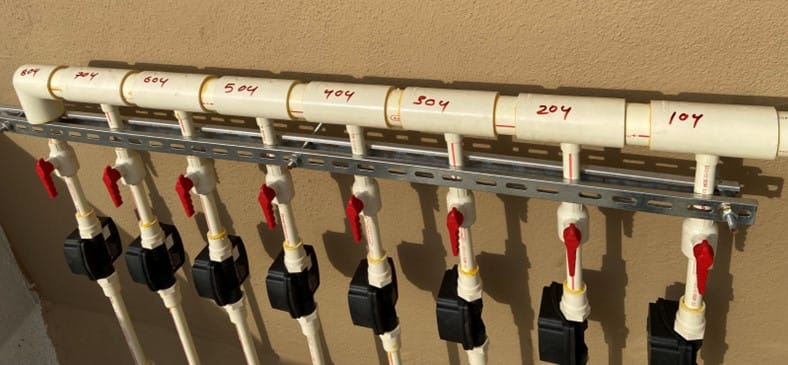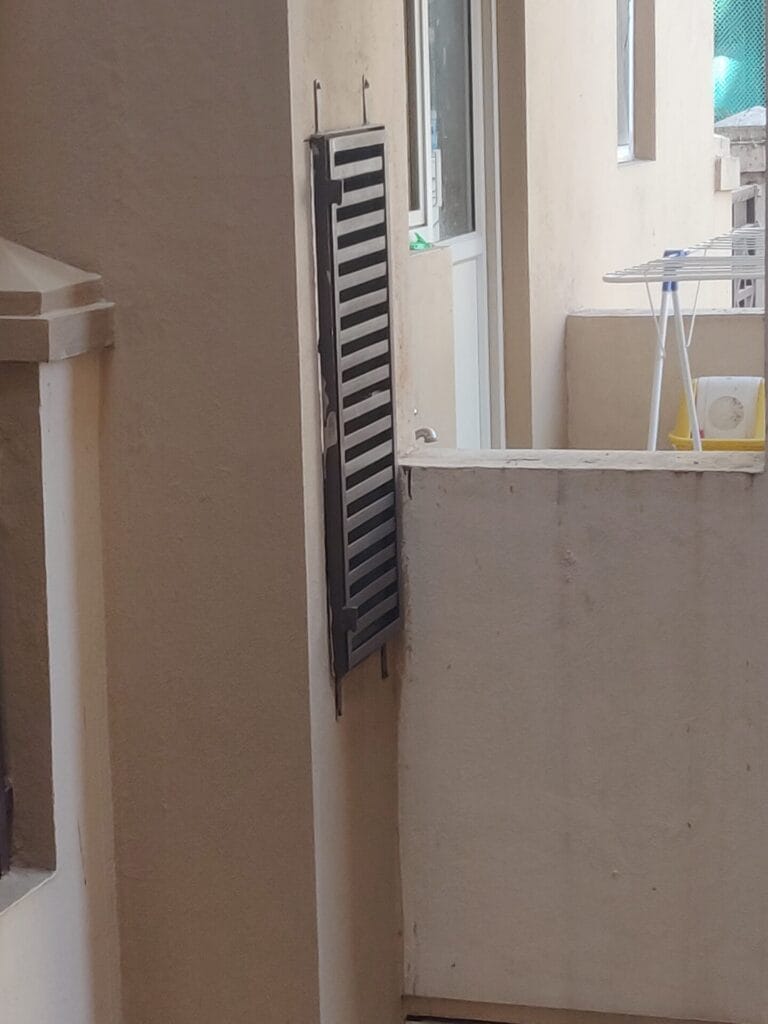Apartments in Bengaluru, especially in the peripheral areas such as Mahadevapura and Bengaluru North, which are dependent on groundwater or tanker water, are being compelled to take some drastic measures of water rationing.
But even amidst these dire situations. there are implementable solutions. Here is an example of an apartment that took strong measures to conserve water, despite being serviced by BWSSB:
Floriana Estates Apartment, a 19-year-old building in Koramangala, recognised the importance of water conservation as a social responsibility and for sustainability. The Managing Committee (MC) of Floriana Estates took several initiatives, including raising awareness, addressing water wastage, fixing leaks, and promoting the use of aerators. Despite these efforts, they did not achieve significant results. Recognising the necessity for a more effective approach, the MC started contemplating the implementation of a water metering system to better manage water consumption in the long term.
Evaluation process
During 2019-20, the MC started evaluating vendors via Bangalore Apartments’ Federation (BAF) portal and by interacting with other BAF members. Several challenges were discovered/identified during the initial feasibility studies, which made vendors reluctant to install water meters:
- The plumbing ducts had multiple inlets for each apartment unit, which posed maintenance challenges and integration difficulties
- The plumbing lines were laid with Galvanised Iron (GI) pipes, and were rusted, especially at the inlet junctions
Read more: BWSSB to push internal water metering, apartments not ready yet
Issues cropped up during the pandemic
In 2020, when the pandemic struck, all the residents were locked up at home. The water consumption at the time shot up by almost 50%. Meanwhile, the rusted GI pipes began to give way in some places, forcing the MC to get emergency repairs done.
As the first COVID-19 wave subsided, the MC swiftly established a technical subcommittee on evaluation and vendor selection. After visiting several installations by BAF members, the subcommittee strongly recommended replacing all GI pipes with CPVC pipes and redesigning the water distribution system to facilitate the installation of metres.
This recommendation was made after identifying the challenges caused by the existing GI pipes, which included issues such as rusting and integration difficulties with metre installations. Upgrading to CPVC pipes and redesigning the distribution system would address these issues and ensure smoother implementation of the water metering system.
The estimated cost for installing 110 apartment meters (1 meter per flat) along with the piping was approximately Rs. 26 lakhs, with another Rs. 4 lakhs anticipated for civil works. The civil works were required as 4 ducts were inaccessible, requiring the ducts to be cut open from the exterior of the building by erecting scaffolding.
This required an Annual General Meeting (AGM) approval, but due to the pandemic, the AGM was postponed. Consequently, the project was authorised and a contract was granted to begin work in January 2021. However, the second wave of COVID-19 began and we were unable to complete the task since the materials were supplied by February 2021. Full-fledged work began in October 2021 and was expected to finish by January 2022. However, the Omicron wave led to a delay until finally it was commissioned in June 2022.
The technology
Vendor selection criteria included:
- Technology
- Ease of installation
- Maintenance
- Meter lifespan
- Software capabilities
- Billing system
The chosen vendor used an ultrasonic flow sensor (an IoT device), ensuring precise measurement and eliminating any moving parts that could disrupt water flow and pressure. This system was installed at the distribution point on the terrace by Urban Civic and was accompanied by a valve for each apartment:
- The flow sensor has a cell with a life of 7 years
- Transmits the data through 2.4 Ghz Wifi spectrum to an aggregator unit, installed at a convenient location to receive signals
- One aggregator can support up to 50 sensors, which are in turn connected to the cloud server using a 4G connection
- The flow sensor has storage capabilities too, which helps in sending the data out later, in the event of any communication failures to the cloud server
- The data collected from the sensors are sent to the server and is available for the MC to monitor
- The portal has the capability of sending alarms when it detects a leak/open tap, which are also sent to the users via SMS/email
- The user has the option of using the app to monitor their daily water consumption and aggregate of a period

Read more: How smart meters are helping Bengaluru apartments save water
Water distribution system
Floriana Estate apartments has 8 floors, each duct had a 2-inches water GI pipe connected to the inlet of each apartment and a common valve for a duct.
Therefore, the entire series of apartments was affected whenever there was a repair/maintenance in each apartment. Presently, the valve for an apartment is installed at the distribution, followed by the flow sensor at the terrace. The main pipeline to a flat is further branched to each inlet (typically 2 or 3 inlets for an apartment) of a specific apartment. So, instead of a single 2-inch GI pipe in the duct, we now have 8 CPVC pipes, of ¾ inch, in each duct.
Challenges faced
Apart from a series of pandemic waves, civil works were the other main challenge. It was not clear how the 4 inaccessible ducts would be routed to the pipelines. This was a major oversight by the builder, requiring us to find a solution, which was highly speculative. We erected scaffolding from the exterior, cut open the ducts, and laid the pipes to the inlet locations. Later, these inlet locations were closed with grills for future accessibility using scaffolding.

The project’s objective was to substitute all GI pipes with CPVC pipes for the new distribution system. However, the inlets from the duct to the apartment were still made of GI pipes. In certain apartments, some of these GI inlets had rusted and needed replacement, which required opening of walls and sealing them. This possibility had been anticipated, and residents were informed in advance that such situations might arise, potentially leading to additional costs for affected apartments, in addition to the access required from within each respective flat.
The entire project was taken up duct-wise, with one day allocated for preparatory works, the next for actual replacement of pipes, and the third for rectification. The issues like blockages, air gaps, and pressure issues were resolved on the third day. The pressure of water at an apartment before and after the execution was monitored and ensured.
Commissioning
Although the project was commissioned in June 2022, backed by AGM resolutions, billing of water started from January 2023. Backed up with a 7-year AMC contract with the vendor on metres, piping and billing, the residents themselves are aware of their consumption, leaks and open tap alerts. More than that, the MC is aware of consumption patterns, serious leaks, and overall management of water usage.

Statistics showed the top 30% of consumers accounted for 50% of the water consumption, another 30% were average consumers, and the remaining 40% of consumers were frugal who benefitted the most from pay-as-you-use billing. The residents have become more responsible, which led to approximately 20% overall reduction in water usage. This shift towards consumer-driven water conservation initiatives transformed the whole project into a success story.
Excellent and thank you for sharing 🙏🙏🙏
Damn good initiative. Altho I live in a individual home it irritated me when my friends staying in apartments would cough up equal amount for water bills. Some apartments were 8 peopled. My friends were not married and were at work 6 days of week and were footing the excesses of other dwellers. Maybe they shd do this.
We have installed water meters in our apartment nearly 12 years ago.
Hi , I own a s.all aloof 7 units, I installed individual meters and has reduced water consumption by 60% , and implemented a system “pay as you use” method, what cannot be measured cannot be controlled .